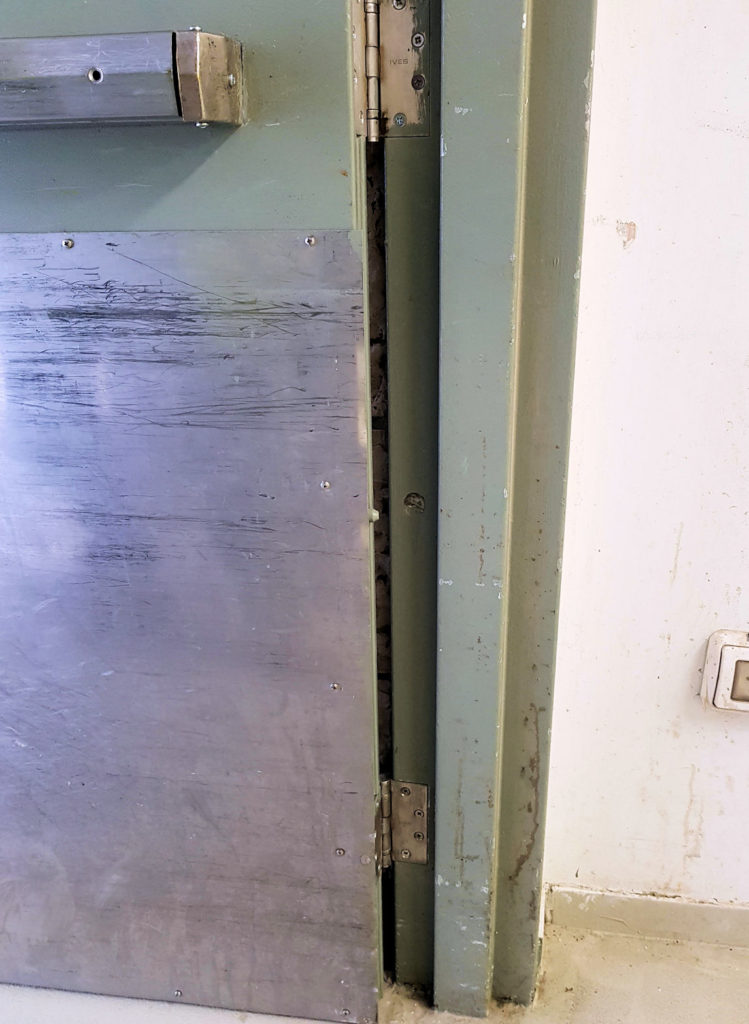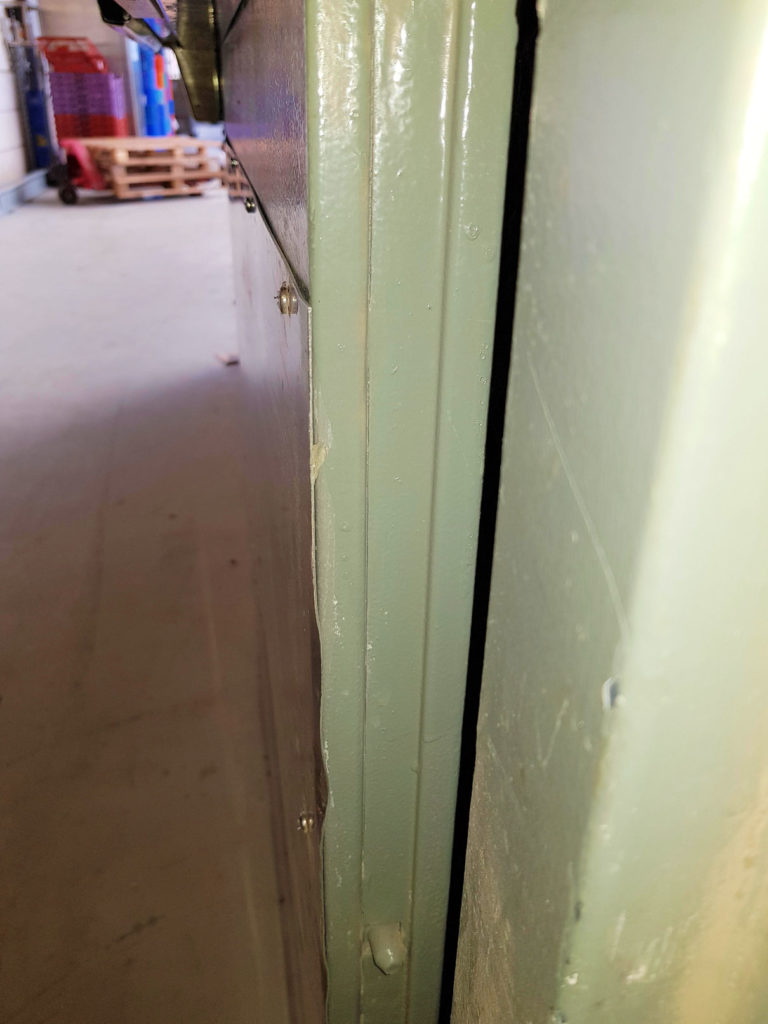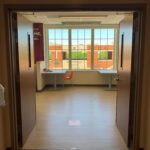Eyal Bedrik of Entry Systems, Ltd., sent me these photos which help to illustrate what happens when a protection plate is sized incorrectly. In addition to the requirements for protection plates on fire doors (those are here), there is the very simple question…
How wide should a protection plate be?
For once, this is an easy one to answer. For single doors, the kick plate width is typically 2 inches less than the nominal door width (36 inches – 2 inches = 34 inches). This ensures that there is no conflict between the plate and the stops on the frame. For pairs of doors without a mullion, the width of the plate is usually 1 inch less than the door width. With a mullion, the single-door formula is typically used – door width minus 2 inches. This can vary slightly depending on the width of the mullion.
This is what happens when your protection plate is too wide:
You need to login or register to bookmark/favorite this content.








The kick plate should be undersized by 1/4″ to account for any surface interruptions on the face of the door including but not limited to frame soffit, mullions, edge guards, soffit mounted weather seals, vertical rod devices, finger guards, etc.
I have a protective plate pet peeve- the plate should line up with the bottom of the door. When the installer leaves an unprotected strip at the bottom of the door it gets scuffed up and defeats the purpose of having protection. To do it right you need to install the plates before hanging the door.
This happens all too often when inexperienced so called door consultants (think handyman) begin to spec hardware they know nothing about .Common in Hospitals, Schools,Universities .